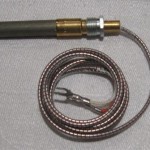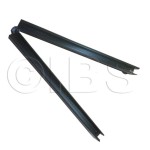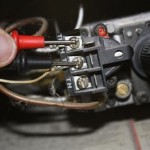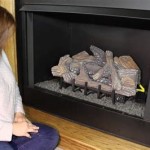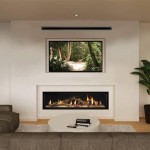Fireplace Interior Paint: Essential Aspects for a Beautiful and Safe Hearth
A fireplace is a central feature in many homes, adding warmth and ambiance. While the exterior of the fireplace often receives attention, it's equally important to consider the interior paint, which plays a crucial role in ensuring both aesthetics and functionality.
Heat Resistance: The Paramount Consideration
The most important aspect of fireplace interior paint is its heat resistance. High temperatures generated by the fire can damage ordinary paints, releasing harmful fumes and potentially causing structural issues. Look for paints specifically designed for fireplace interiors, which typically contain ceramic or silicone additives to withstand extreme heat without degradation.
Color and Finish: Creating the Desired Ambiance
Once you've ensured heat resistance, you can focus on choosing the color and finish of your fireplace interior paint. Consider the overall design aesthetic of your room and the type of atmosphere you want to create. Dark, earthy tones can evoke a rustic charm, while light, reflective colors can brighten up a space and make it feel more spacious.
Low VOCs for Health and Safety
Volatile organic compounds (VOCs) are chemicals released into the air as paint dries. Prolonged exposure to high levels of VOCs can cause health issues. Choose fireplace interior paints with low VOC levels to minimize potential risks. Look for paints that meet or exceed industry standards for low VOC emission rates.
Matte or Shiny: Choosing the Right Texture
Fireplace interior paints come in both matte and shiny finishes. Matte finishes absorb light, creating a more subdued look. They can help conceal imperfections and are a good choice for traditional or rustic interiors. Shiny finishes reflect light, making the fireplace appear more prominent. They're ideal for modern or contemporary styles.
Durability and Longevity
Fireplace interior paint should be able to withstand the rigors of daily use, including cleaning and potential smoke or soot buildup. Choose durable paints with a high scrub resistance rating to resist scratches and wear. Opt for paints that form a strong bond with the surface, ensuring longevity and reducing the need for frequent repainting.
Preparation and Application
Proper preparation is key to ensuring a successful paint job. Remove any existing paint or debris from the fireplace interior. Clean the surface and let it dry completely. Use high-temperature masking tape to protect any areas you don't want to paint. Apply several thin coats of paint, allowing each coat to dry before applying the next.
Conclusion
Choosing the right fireplace interior paint is essential for safety, aesthetics, and durability. By considering heat resistance, color and finish, low VOCs, texture, and preparation, you can create a beautiful and functional hearth that will enhance the ambiance of your home for years to come.

How To Paint The Inside Of A Fireplace Simple Upgrade Maria Louise Design

30 Gorgeous Painted Brick Fireplace Ideas

7 Beautiful Ideas For Painting Interior Brick Fireplaces

How To Prep Prime And Paint A Brick Fireplace Young House Love

Interior Brick 4 Tips For Painting A Fireplace

How To Paint A Brick Fireplace Beamin Moore

How To Update A Brick Fireplace With Chalk Paint Diy Beautify Creating Beauty At Home

Paint The Inside Of Your Fireplace And Change Grout Color

How To Spray Paint Fireplace Interior The Diy Playbook

Painting The Interior Of A Fireplace Shine Your Light
Related Posts

